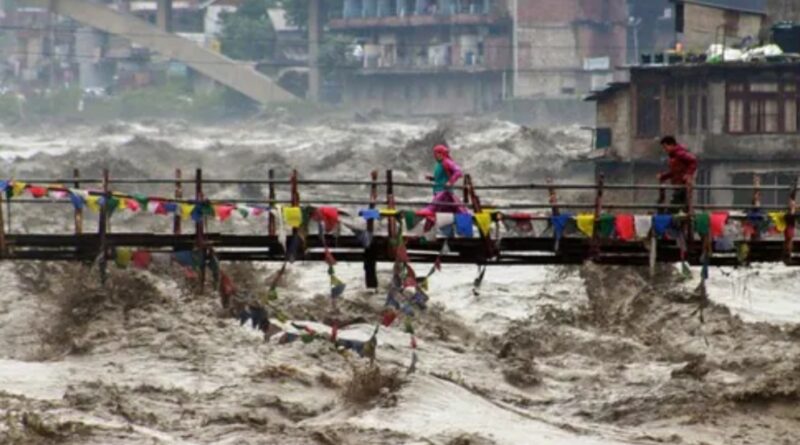When the Skies Turn Violent: Himachal’s Battle Against Relentless Rain and Rising Risk
Himachal Pradesh, known for its serene mountains and spiritual sanctuaries, is now grappling with a growing climate crisis. What were once rare cloudbursts in remote Himalayan peaks are now striking towns and valleys—bringing destruction closer to home.
This monsoon season alone, the State Disaster Management Authority has recorded over 50 cloudbursts, 95 floods, and 133 landslides. Experts say the frequency of extreme rainfall events in the region has surged by nearly 200% over the last 30 years, turning Himachal’s monsoon into a season of fear.
The shift is stark. Between 2018 and 2022, only six cloudbursts were reported. But in 2023, the skies unleashed a fury: three major rain events in July and August triggered six cloudbursts, 32 floods, and 163 landslides in just days. By season’s end, the state had endured 45 cloudbursts, 83 floods, and over 5,700 landslides—a devastating record. The trend continued in 2024, with more cloudbursts and floods leaving behind shattered roads, homes, and lives.
Scientists link this surge to climate change, glacial melt, and unchecked human activity in fragile mountain zones. Studies show Himalayan glaciers are melting twice as fast since 2000, expanding glacial lakes and raising the risk of outburst floods. Hydropower projects and dams, while promising energy, are also altering local climates—disrupting moisture patterns and destabilizing slopes.
Meteorologists explain that a cloudburst occurs when over 100 mm of rain falls in an hour, often in mountainous terrain where trapped clouds release torrents of water in minutes. These sudden downpours overwhelm rivers and drains, turning peaceful valleys into disaster zones.
Even the pattern of rainfall has changed. Instead of steady showers spread across months, the same volume now falls in a single day—causing flash floods, soil erosion, and landslides. Urbanisation and deforestation have worsened the impact, with natural drainage systems destroyed by unplanned construction.
Experts warn that Himachal’s mountains are becoming dangerously vulnerable. They call for urgent reforms: stricter checks on construction, safer hydropower development, restoration of forests and drainage systems, and better early warning mechanisms.
What was once a seasonal challenge has now become an annual threat. Himachal Pradesh stands on the frontline of climate change, where every monsoon brings not just rain—but a test of resilience, planning, and compassion.



